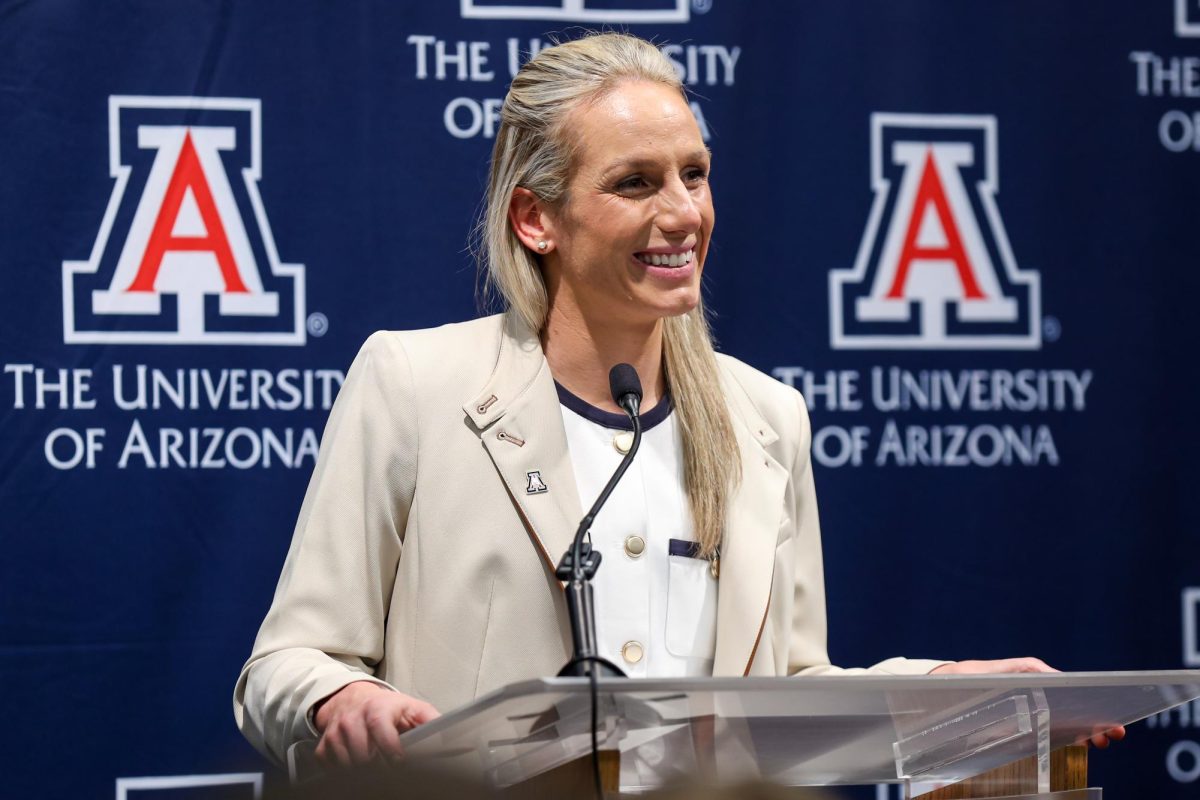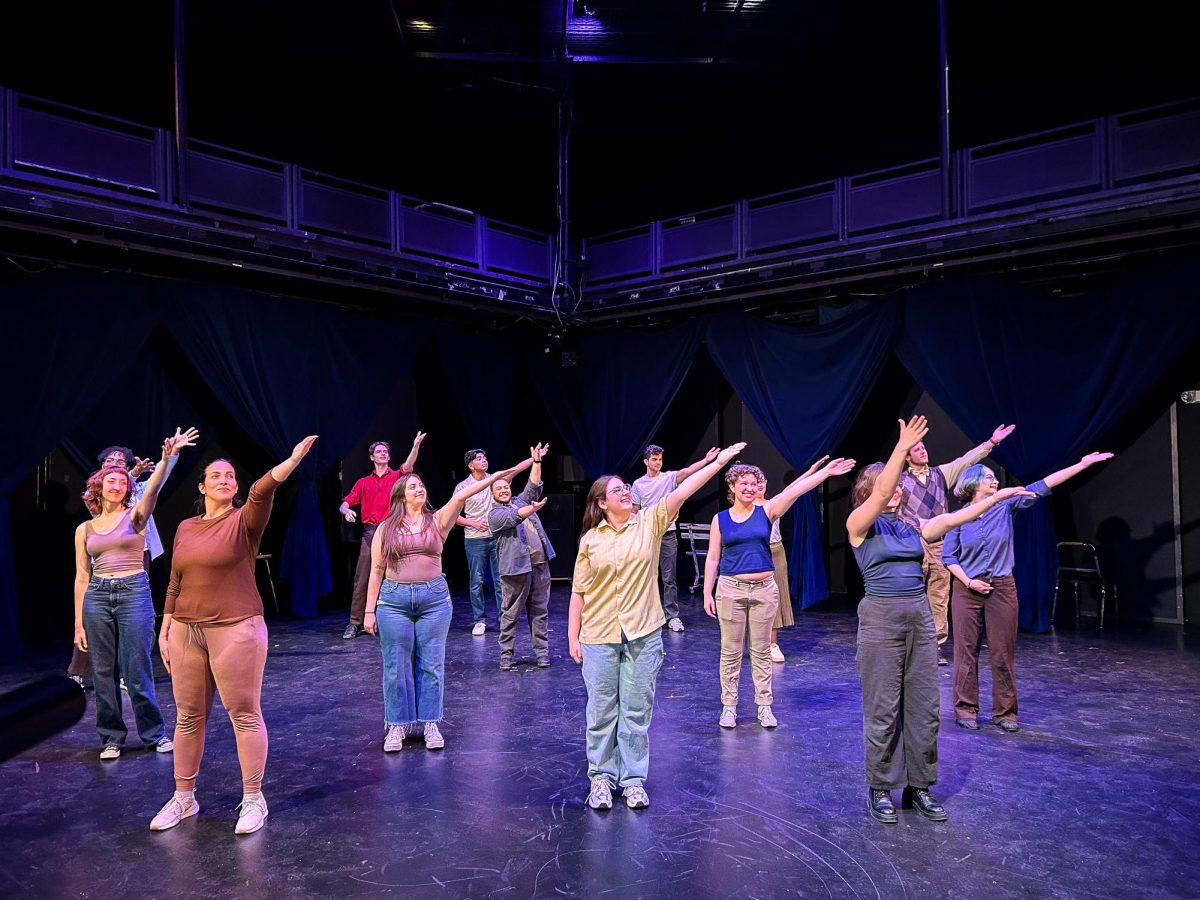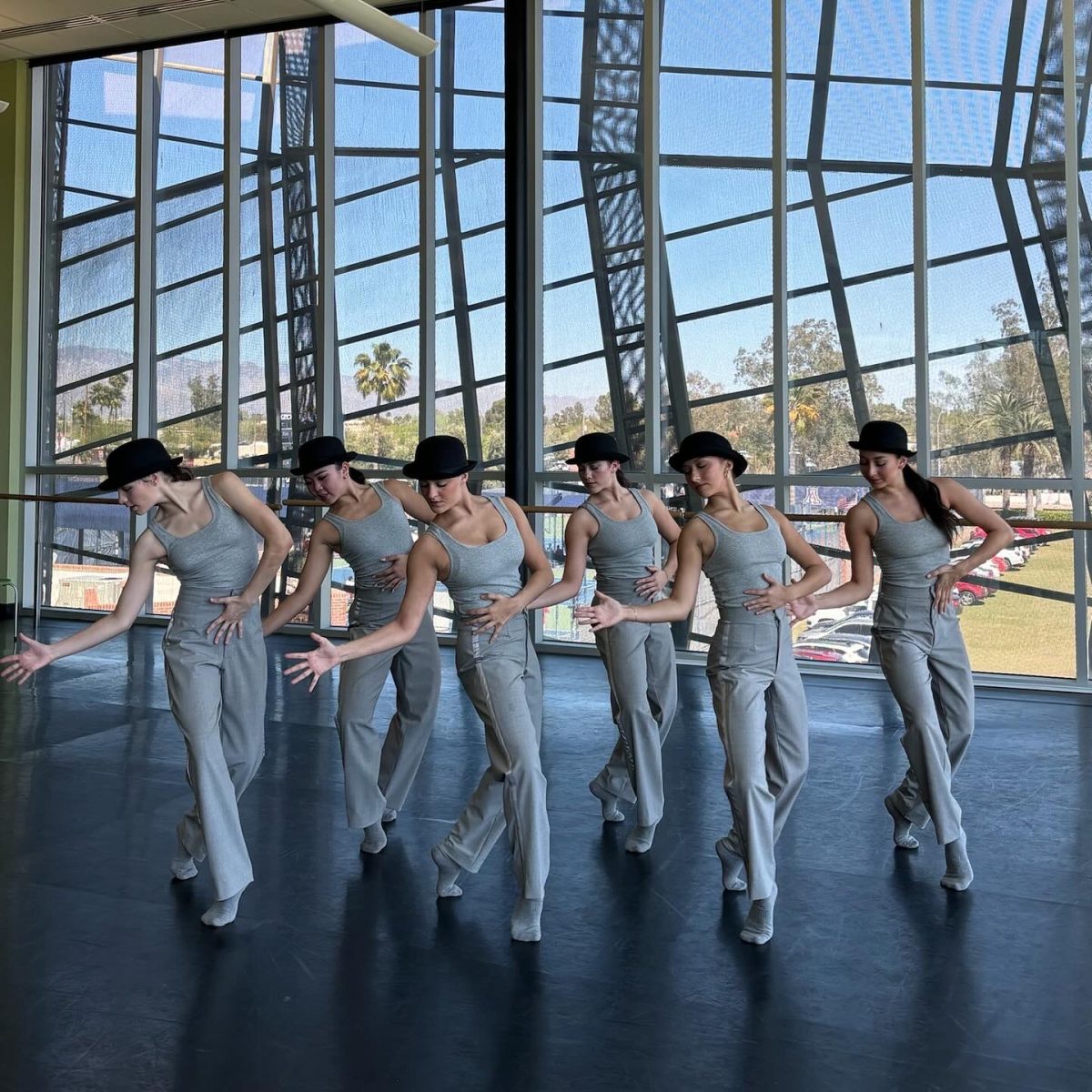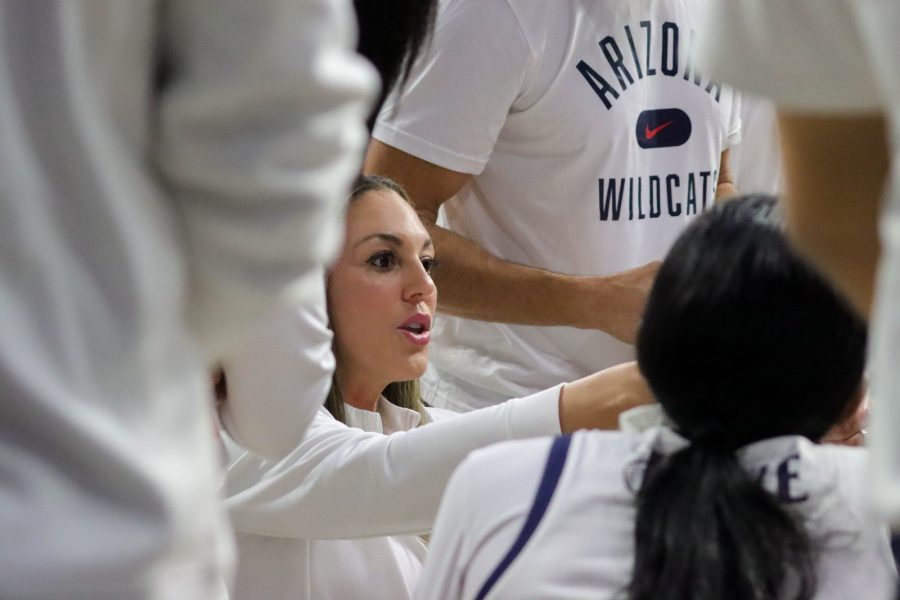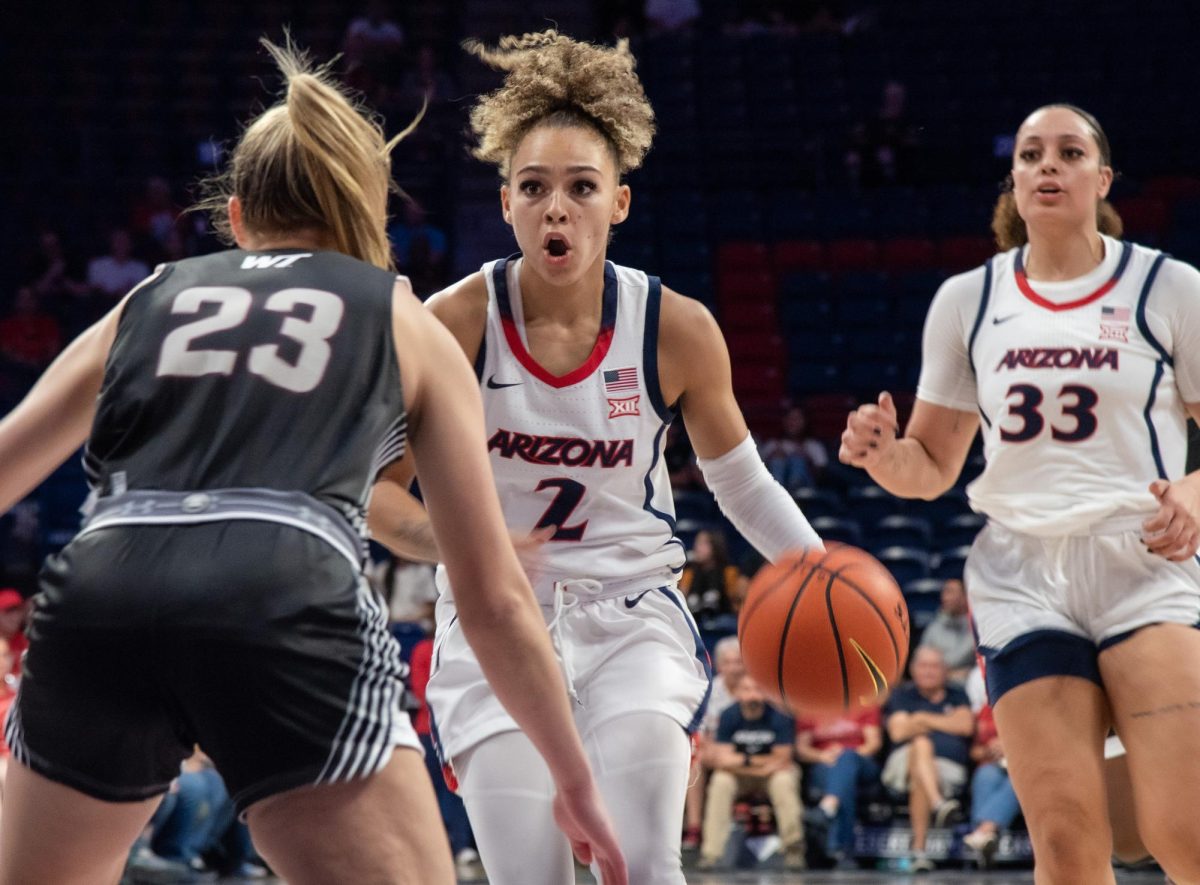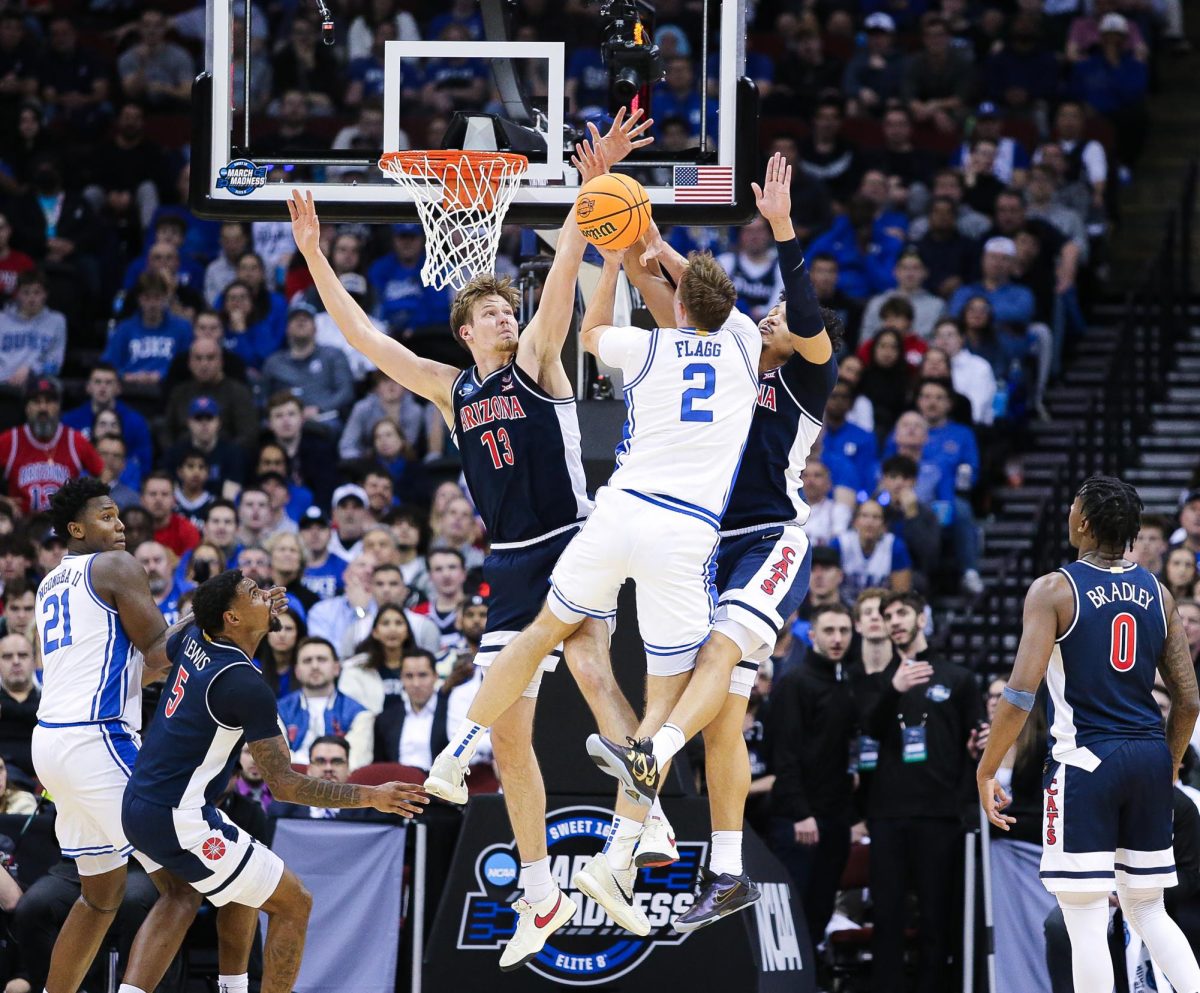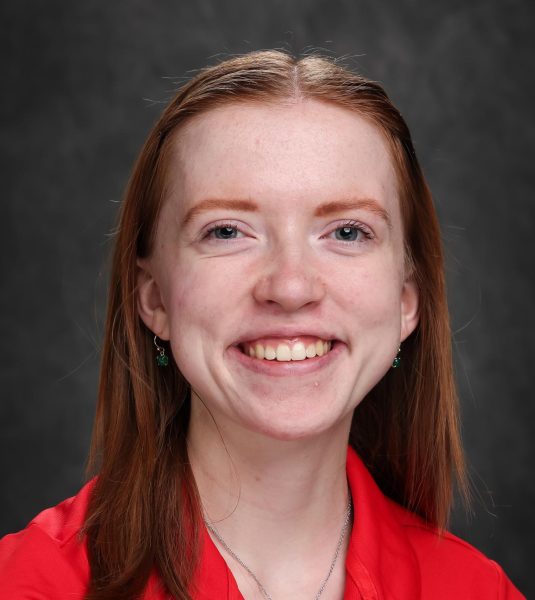President Suresh Garimella officially started his tenure as the University of Arizona’s leader Tuesday, replacing former President Dr. Robert C. Robbins. His goal in these first few weeks? To hit the ground running, first and foremost.
Even before his arrival on campus, guided to Old Main by Wilbur and Wilma, Garimella has been engaging with students, staff and faculty and familiarizing himself with the university and surrounding Tucson communities.
Garimella has already met with the Office of Public Safety and is working closely with senior university leadership like Interim Provost Ronald Marx and Dean of Students Chrissy Lieberman.
Garimella also attended a Big 12 meeting in Dallas on Tuesday, flying to Tucson late Tuesday evening before his welcome Wednesday.
Introduced by the Pride of Arizona and Marx, Garimella began his first official day at the UA by addressing a gathered crowd of community members, commenting on his excitement to get started.
A community-based approach
One of Garimella’s priorities as the UA’s newest leader is serving the university and greater Tucson community.
The University of Arizona is a land-grant university, a type of institution established to focus on agricultural and technical education which played a major role in democratizing education, according to Garimella.
“It’s this focus on agriculture and mechanical arts, is what it’s called, that brought education to people who didn’t afford it and who were from a social class that couldn’t dream of education,” Garimella said.
With this “land-grant” label, Garimella said the UA has the ability and responsibility to better the community in a variety of ways, from research about drug addiction to water-preservation strategies.
When looking at the potential of the UA, Garimella asked himself how the school can use its intellectual capital, social capital and extensive resources to make not just the university but the surrounding region a better place.
Garimella also hopes for the school to build a stronger relationship with governing bodies across the state, a goal furthered by the visit of congressional delegation to the UA to learn more about how the university can serve the state.
“We had a very strong relationship with the congressional delegation in Vermont, and I hope to develop that here, but also with the State House up in Phoenix and with Mayor Romero and other people here,” Garimella said.
The concept and role of “community,” and the unique challenges one faces, varies from place to place and university, meaning no one strategy can sufficiently address the needs of each student body, something Garimella has learned during his time at other institutions.
“The solutions or the challenges and such are always specific to the place, its history, its recent past and such. So, you bring your learning and you bring your experience, but you come up with solutions from learning what the situation is like, what the political climate is like, what the congressional support is like, what the donors are like, all of that,” Garimella said.
The United Campus Workers of Arizona, a union representing workers at ASU, NAU and the UA, is part of the community that Garimella will need to work with, and has requested that the new president include the union in conversations about university leadership.
“We welcome the opportunity to work with President Garimella and urge him to show his commitment to working shoulder to shoulder with the campus community by engaging with all our university’s employees rather than just a handpicked few, and by welcoming the input of our shared governance bodies. In particular, we urge him to establish an open process for the new search that will follow, and to appoint a Provost who has been a member of our campus community and who enjoys wide respect and support. UCWAZ, CWA Local 7065, will continue to organize around accountability and transparency within the University of Arizona,” UCWAZ said in a statement.
Financial futures
Garimella joins the UA community at a time of financial apprehension, with the university still fighting its way back from the more than $162 million deficit announced nearly one year ago. According to the university’s latest updates, the deficit now hovers around $63 million.
Student and faculty frustration and concern over realized and potential cuts has been a focal point of campus discourse over the past year, but Garimella remains optimistic and open to having conversations with anxious members of the campus community.
A part of this solution, Garimella said, is investment from the state and an improved partnership with the aforementioned congressional delegation. The burden of this situation, Garimella said, should never fall on the backs of students.
Garimella cited previous experience with financial system restructuring at his previous place of employment, Purdue University, that would help him bring some expertise and solutions to the table at the UA.
“There are some systems issues we need to fix. We need to get a better handle on where money is spent. And once we do that, my sense is we’ll be past this current financial challenge. I mean, a good amount of progress has already been made, so I’m fairly optimistic, actually, about being able to get past that quite quickly and then build in a way that we can invest in things,” Garimella said.
Safety strategies
Safety has long been a major concern of university community members, especially in the wake of the 2022 murder of Professor Thomas Meixner and the more recent on-campus shooting of 19-year-old Minhaj Jamshidi.
According to Garimella, he has met with Chief Safety Officer Steve Patterson and University of Arizona Police Department Chief Chris Olson and will continue to meet with safety experts regularly.
Garimella also said that while technical safety elements across campus, like blue lights, locks on doors, etc., are important and it is equally as vital to have strong systems of support in place for if and when things do happen that threaten community safety.
“I don’t know that we can ever guarantee that nothing bad will happen. But we need to be prepared when things happen. We need to have the mental health resources available. We need to talk,” Garimella said. “The governance groups are important; hey, what are you hearing? What is the source? I mean, you know, you can’t sort of wave a wand and make all the uncertainty go away, but everybody has ideas to offer about what we can do better, and so we will definitely listen.”
Demonstrations and discourse
After the events of last spring, when student demonstrators clashed with police on campus after police stormed demonstrators’ encampments, rules about campus use and student demonstrations have been focal conversations amongst members of the university community.
Garimella has previous experience in the realm of civil discourse, having taught a course about the topic at the University of Vermont.
“You can hold different opinions, it’s okay, but to do it in a way that is not disruptive, that is not harming others […] but I’m very impressed that the University of Arizona is quite well known for free speech and expression, so we’ll certainly respect that. At the same time, I think it’s very important to communicate the campus use policy so that our policies are clear, they’re content neutral, they’re applied consistently,” Garimella said. “I think the answer comes well before specific marquee events like that. It comes with communications, with talking to all sides. So Provost Marx, Dean of Students Chrissy Lieberman and others, I’ve been talking to them a lot. They’ve had lots of conversations with different groups on campus, on all sides of the picture: Hillel, with the [Students for Justice in Palestine] group, so I’m hoping that having channels of communications open, is helpful in giving people tools to talk to each other and to express themselves.”
Students from public universities across Arizona had previously expressed frustration with the at-times violent enforcement of campus use policy to dispel demonstrations. According to a United Campus Workers of Arizona petition circulated in the aftermath of the spring protests, “Arizona students were met with unnecessary violence and harmful actions by our universities’ administrations and campus police departments […] At UA, police tear-gassed and deployed rubber bullets against unarmed protestors. One student even suffered a concussion as a result of these actions.”
With the anniversary of the Oct. 7 Hamas terrorist attacks and a continued human rights disaster playing out in Palestine, the UA campus may be a hotspot for discourse about these issues, with the employment of this campus use policy coming into play once more. Enforcing this policy while also protecting the First Amendment rights of students is just one of the issues Garimella will have to navigate as he steps into this role, but one that he hopes open communication among all community members will help to resolve. .
“Limitless Potential”: Looking to the future
Despite the many challenges Garimella faces in the immediate future, he remains optimistic about the direction of the university.
“It’s easy to be distracted with a safety issue or a finance issue or so, which are all important, we need to pay attention to that. But also keeping in mind how great this institution is, how many students it has served, our great alumni community, our research strengths, our importance to the Tucson and southern Arizona communities, our athletics, our arts, all this sort of stuff, there’s so much potential for us to grow,” Garimella said.
Follow the Daily Wildcat on Instagram and Twitter/X









